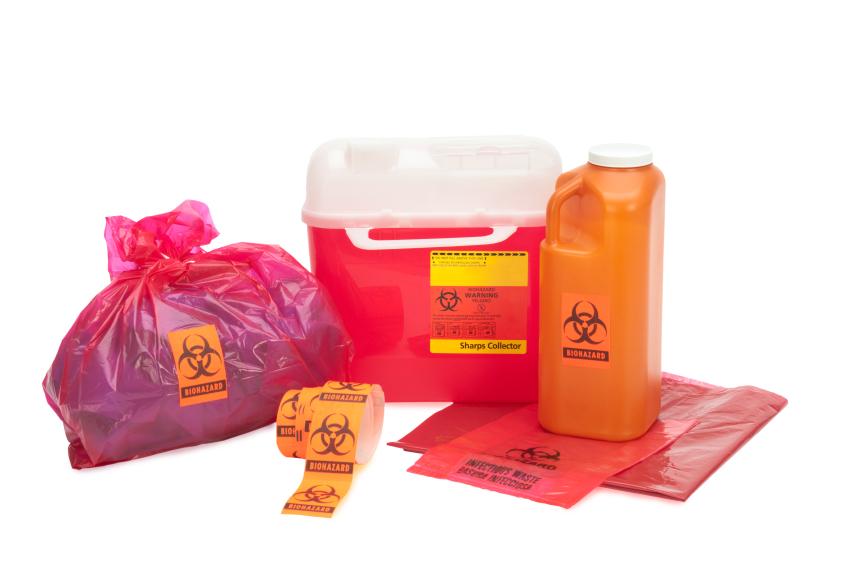Understanding the Different Sorts Of Garbage Disposal Strategies
In the realm of waste administration, the range of disposal techniques readily available today is substantial and differed, each method serving an unique objective in addressing the challenge of waste disposal. click here. From reusing techniques that intend to offer new life to materials, to the complex procedures of hazardous waste administration, the landscape of garbage disposal is intricate yet crucial for environmental sustainability. Comprehending the subtleties of these various methods not only drops light on the importance of accountable waste management yet likewise motivates us to reassess our approach towards waste disposal in a rapidly developing world

Recycling Approaches
Recycling methods are crucial for lasting waste administration practices in both industrial and property settings. medical waste removal service. By implementing effective recycling strategies, a substantial amount of waste can be drawn away from landfills, conserving natural deposits and decreasing the environmental effect of manufacturing procedures
In suburbs, curbside recycling programs play a vital duty in motivating homes to different recyclable products from basic waste. Materials such as paper, plastics, glass, and metals can be sorted and gathered for handling into new products, minimizing the need for resources and energy-intensive manufacturing procedures.
Industrial centers additionally rely on recycling approaches to reduce waste generation and promote a round economic climate. By executing closed-loop systems, companies can reuse products within their production processes, minimizing costs and environmental impact. medical waste disposal. Furthermore, industrial recycling programs often involve collaborations with specialized reusing centers to make certain that products are effectively arranged, processed, and reintegrated into the supply chain
Composting Methods

Oxygenated static heap composting involves blending natural waste products in a big heap and on a regular basis turning it to guarantee appropriate oygenation. This technique is effective for large composting procedures. On the other hand, vermicomposting uses earthworms to break down raw material right into nutrient-rich spreadings. This strategy is well-suited for smaller-scale procedures and homes.
In-vessel composting entails placing organic waste in a closed container with regulated problems for temperature level and oygenation. Windrow composting consists of forming long rows of organic waste and regularly turning them to promote decay - medical waste removal service.
Land Fill Disposal
Landfill disposal is a commonly utilized approach for taking care of waste that can not be reused or composted. Methane gas, a by-product of breaking down natural waste in land fills, is commonly gathered and used as a resource of eco-friendly energy. Efforts to lower reliance on landfills consist of advertising waste reduction, reusing, and checking out alternative waste disposal approaches to lessen the ecological impact connected with typical garbage dump disposal practices.

Waste-to-Energy Incineration
Incineration of waste for energy generation is an approach increasingly being considered as an option to typical landfill disposal methods. Waste-to-energy incineration entails the burning of waste materials at high temperatures, commonly in specialized facilities developed to produce power or heat through the process - click here. This method not just reduces the volume of waste that would certainly or else be destined for garbage dumps yet additionally utilizes the warmth generated during incineration to create energy
Among the vital advantages of waste-to-energy incineration is its ability to generate power while minimizing the environmental effect contrasted to standard land fill disposal approaches. By transforming waste into energy, this technique aids in decreasing greenhouse gas exhausts and reliance on fossil gas for power generation. In addition, waste-to-energy centers are equipped with advanced air pollution control innovations to alleviate prospective toxic wastes launched during the combustion process.
Hazardous Waste Administration

Taking into consideration the essential relevance of liable waste administration methods, especially in the realm of environmental sustainability, the emphasis now shifts in the direction of the detailed domain of Hazardous Waste Management. Unsafe waste postures considerable risks to both human wellness and the atmosphere, necessitating customized handling and disposal methods. Common instances of contaminated materials include chemicals, batteries, pesticides, and digital waste.
Contaminated materials Management entails the identification, collection, transportation, therapy, and disposal of products considered potentially hazardous or hazardous. This procedure needs adherence to rigorous laws and standards to mitigate negative impacts on ecological communities and public health and wellness. Numerous techniques are used in managing contaminated materials, including recycling, safe and secure garbage dumps, encapsulation, and chemical therapy.
Proper Harmful Waste Management is important for preventing contamination of soil, water resources, and air pollution. It is crucial for industries, labs, healthcare facilities, and various other generators of contaminated materials to execute durable monitoring strategies, training programs, and emergency situation feedback plans to make sure the secure handling and disposal of these products. Failure to manage harmful waste appropriately can have far-ranging consequences, highlighting the value of accountable and thorough techniques in this area.
Verdict
To conclude, waste disposal methods play an important function in handling and lessening the influence of waste on the setting. From reusing and composting to land fill disposal and waste-to-energy incineration, each approach has check that its own advantages and restrictions. Appropriate management of contaminated materials is likewise necessary to secure public health and wellness and the atmosphere. It is necessary for people and markets to comprehend the various waste disposal techniques available and pick one of the most ideal approach for sustainable waste administration.
In the realm of waste monitoring, the variety of disposal techniques readily available today is substantial and varied, each approach serving a distinctive function in addressing the obstacle of waste disposal. click here. From reusing approaches that aim to give brand-new life to products, to the complex procedures of harmful waste management, the landscape of waste disposal is intricate yet critical for ecological sustainability. Comprehending the nuances of these various techniques not just drops light on the importance of accountable waste monitoring however also motivates us to reconsider our approach in the direction of waste disposal in a swiftly advancing globe
Efforts to reduce reliance on landfills consist of promoting waste decrease, reusing, and discovering alternative waste disposal methods to lessen the environmental footprint linked with standard landfill disposal methods.
It is important for individuals and markets to recognize the different waste disposal methods readily available and select the most ideal method for lasting waste management.